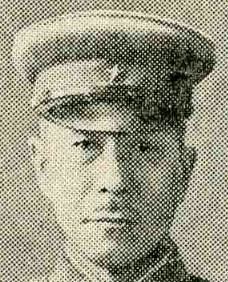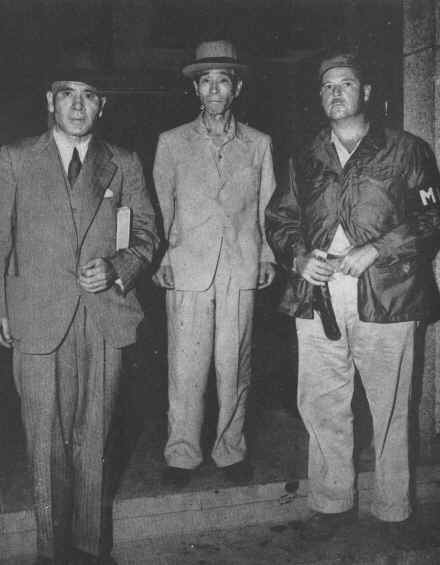Monarch Emperor Hirohito Rank General Years of service 1909 - 1945 | Education Army War College Name Shigenori Kuroda | |
 | ||
Battles/wars Second Sino-Japanese WarWorld War II Similar People Ma Hongkui, Ma Hongbin, Fu Zuoyi, Yan Xishan, Zhu De | ||
The Japan Philippines cooperation
Shigenori Kuroda (黒田 重徳, Kuroda Shigenori, 5 October 1887 – 30 April 1952) was a Japanese general of the Japanese Imperial Army and the Japanese Governor-General of the Philippines during World War II.
Contents
- The Japan Philippines cooperation
- Biography
- Battle of Wuyuan
- Philippines
- American return and postwar life
- References

Biography
Kuroda was commissioned as an infantry officer in 1909. He graduated from Army War College in 1916 with Tomoyuki Yamashita and Shizuichi Tanaka, and later became a military observer in Europe during World War I. In 1922, Kuroda served as military attaché in England. From 1935-1937, he served as military attaché in India. In 1937, he was made major general and Deputy Inspector General for Military Training in 1941, which was then under General Otozō Yamada. From July 1, 1942 to May 19, 1943, he was Chief of Staff in Japanese Southern Expeditionary Army Group.
Battle of Wuyuan
He participated in the Second Sino-Japanese War, where he led the 26th Division in the Battle of Wuyuan. The battle, which was part of the Japanese counterattack in response to the Chinese 1939-40 Winter Offensive, resulted to a Chinese victory and Japanese retreat. The Japanese call it 第2次後套作戦 (English:The second battle of Wuyuan). Despite the loss in the said battle, the Japanese had a strategic victory for making the Chinese fail their primary objectives.
Philippines
From May 28, 1943 to September 26, 1944, he was made military governor of the Philippines, succeeding Shizuichi Tanaka in the said post. He later became the first Commander in Chief of the Japanese Fourteenth Area Army, which were the merged elements of the Japanese 14th Army, 35th Army and 41st Army, in the Philippines from July 28 to September 26, 1944.
During his rule in the Philippines, a constitution was formed by the Preparatory Commission for Independence, consisting of 20 members from the KALIBAPI. The Preparatory Commission, led by José P. Laurel, presented its draft Constitution on September 4, 1943 and three days later, the KALIBAPI general assembly ratified the draft Constitution.
By September 20, 1943, the KALIBAPI's representative groups in the country's provinces and cities elected from among themselves fifty-four members of the Philippine National Assembly, the legislature of the country, with fifty-four governors and city mayors as ex officio members.
Three days after establishing the National Assembly, the Second Philippine Republic's inaugural session was held at the pre-war Legislative Building and it elected by majority Benigno S. Aquino as its first Speaker and José P. Laurel as President of the Republic of the Philippines, who was inaugurated on October 14, 1943 at the foundation of the Republic.
American return and postwar life
By early 1944, the Imperial Japanese Army General Staff anticipated the return of American forces to the Philippines. So, the weight for preparing against an American landing fell to Kuroda. Kuroda planned to concentrate the bulk of the Japanese forces in Luzon, but his plan was never considered by the Imperial Army General Staff. The staff instead devoted only five of his ten divisions in Luzon, which was said to have no experience in any of the past Japanese campaigns. After being denied of his ideas for the defense of the Philippines, he was said to have been lax in his duties. He was replaced by Tomoyuki Yamashita, his former schoolmate in the Army War College, who was said to be "superb and excellent tactician", after the fall of his patron Tojo Hideki from power. Yamashita found the condition "unfavorable" with many of the newly placed generals unfamiliar with the archipelago. The defense for the Philippine archipelago was charged to 270,000 army and air force troops as of October 20, 1944. The total size of the Japanese navy at the time amounted to 17 battleships, 4 aircraft carriers, 13 heavy cruisers, 6 light cruisers, and 34 destroyers. Kuroda then retired in 1945, arrested for war crimes in 1946, and condemned to life imprisonment. His lawyer at the time was Lieutenant Colonel Jose Lukban. He disguised Kuroda by putting a mole on his face, and removing that at the end of the trial to discredit the witnesses thrown at the Japanese general. He was released eventually in 1952, and died the same year.
